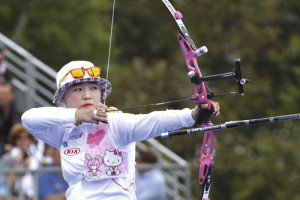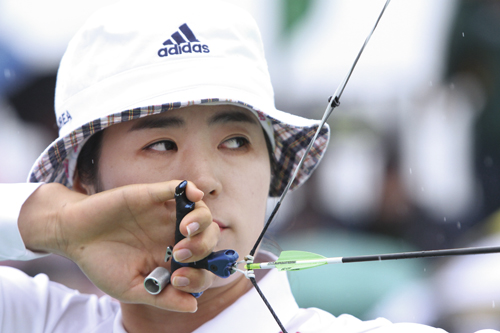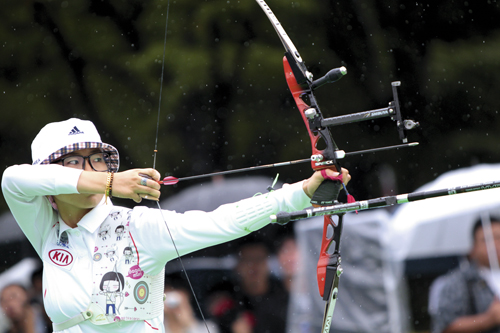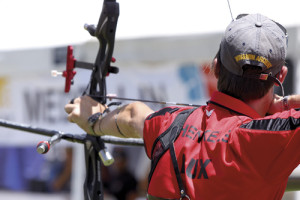James Park revisits the role of biomechanics in good form: this time, the draw
I have previously noted that the principles of good biomechanics are quite simple. We want to use our bodies in the most effective manner to enable high scores and to minimise the likelihood of injury.
I try to capture the elements of good biomechanics in several points:
- Use bones as much as possible and muscles as little as possible. Otherwise we will tire quite quickly.
- Use only large muscles. That way we will be able to hold the bow more steadily and we minimise the likelihood of injury.
- Only use a muscle during drawing the bow if we need to use that muscle to hold the bow at full draw. That is, there should be no ‘transfer phase’.
- Avoid using muscles in antagonism (fighting each other). Otherwise we will tire quite quickly. Avoid, as much as possible, moving joints while under heavy loads. Otherwise we increase the likelihood of injury.
In that previous discussion I used those principles to show that the ideal orientation of the bow arm should be such as to avoid use of the rotator cuff muscles. That helps to avoid injury, maximises string clearance, gets the forces as much as possible along the bones, and promotes a good bow hand position. I would now like to extend that discussion to the means by which we draw the bow.
First, we would like to avoid using the biceps and triceps muscles of our drawing arm. That is only possible if the drawing arm forearm lies along the line of force of the bow. That is, the drawing arm forearm needs to be aligned with the line between the pressure point of our bowhand on the bow, and the point at which we are holding the string. If we do that it is then possible to draw the bow using only our large back muscles, as desired (and no ‘transfer phase’ is needed.)
Next, we need to ensure that we move our bowarm shoulder joint as little as possible while it is under a heavy load. For a recurve bow the load becomes increasingly heavy as we draw the bow. For a compound bow the load is heavy through most of the draw. That means that we need to get our bow arm shoulder into its full draw position as soon as possible during the draw as otherwise we are risking injury. This is best done by placing the drawing arm shoulder and bow arm in their full draw position right at the start of the draw.
To minimise the lateral force on the bow arm shoulder joint it is then necessary to draw the bow in a manner that keeps the line of force close to the bow arm shoulder joint. That can be easily achieved by drawing the bow with the drawing arm and bow hand at about eye height and close to the archer’s head, then dropping both the bow hand and drawing hand to their full draw positions at the end of the draw (much as you will see if you watch the Korean women’s team shooting).

Keeping the draw hand close to the face helps keep it in line with the line of force through the bow
I see a number of archers drawing their bows with their drawing hand well out from their body, with the arrow aimed to the side during the draw. They then bring their drawing hand laterally into their full draw position. While they are able to keep their drawing arm forearm aligned with the line of force, I see this as poor technique for two reasons. First, that method of drawing the bow means that there will be very high lateral forces on the bow arm shoulder joint and usually movement of the shoulder joint during the draw, which will increase the likelihood of injury. That reason alone is sufficient for me not want to see my archers using that technique.
Second, that means of drawing a bow significantly increases the likelihood that the archer will twist the bow laterally. I have seen archers using this technique at major tournaments move their bow through lateral angles of up to about 10 degrees towards the end of the draw. However, a torque variation of only 0.1 degree will move the arrow laterally by about 50mm at a target distance of 70 metres. It seems that if the archer is moving the lateral angle of the bow by several degrees during the draw it will be near impossible to avoid variable bow torque of tenths of a degree, resulting in significant (and unnecessary) score loss.

Draw load patterns vary between recurve and compound, but for both disciplines distributing that load across the bones is important



